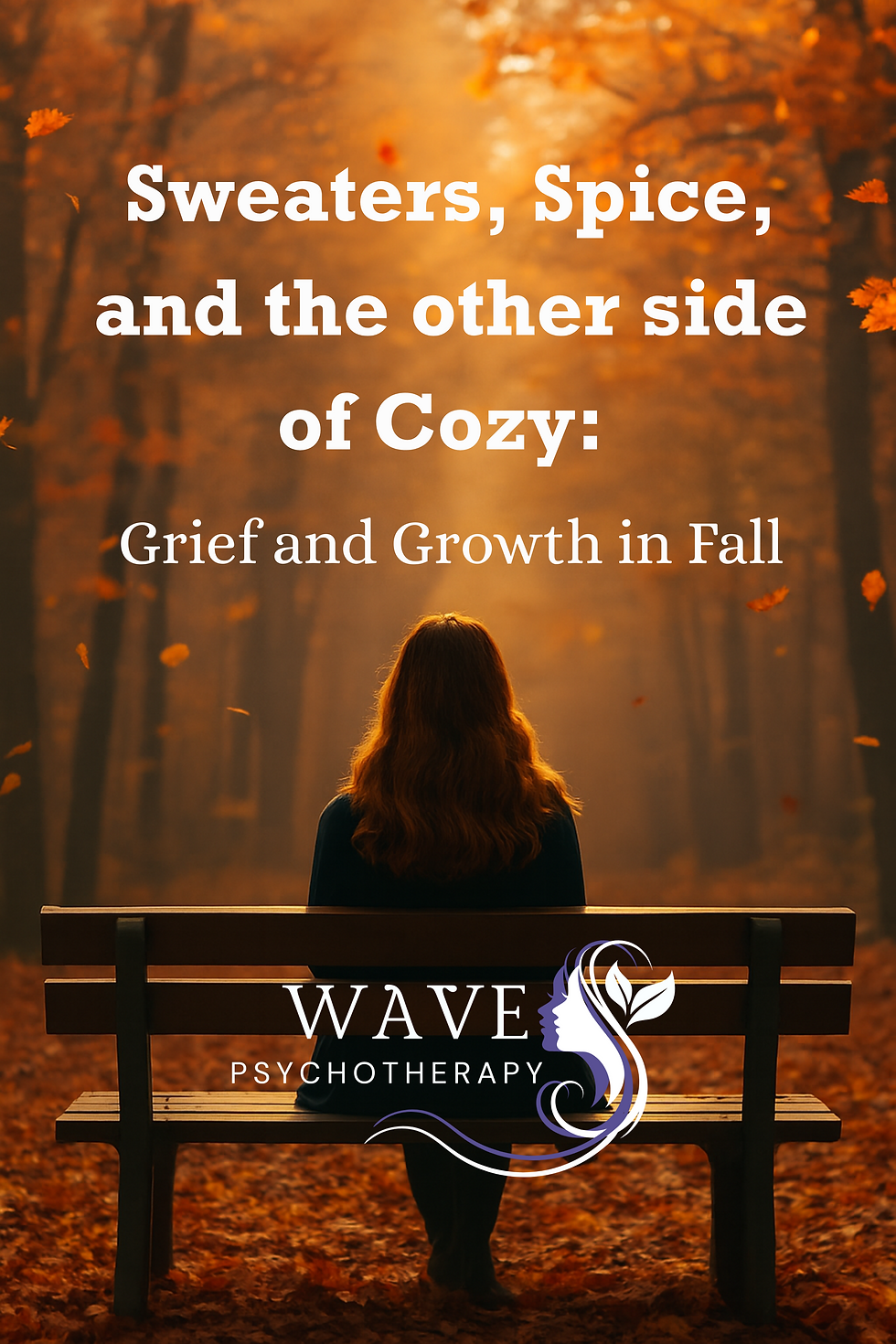Riding the Waves of Seasonal Change: Tips for Recognizing Mental Health Shifts and Staying Well
- Nicole Pitt

- Nov 12, 2024
- 3 min read
As the seasons shift, so do our emotional waves. Changes in light, temperature, and daily routines can influence our mental health in ways that might feel subtle at first but can build into noticeable emotional “tides.” This is especially true for those who experience Seasonal Affective Disorder (SAD) or heightened stress and anxiety during colder months. But by learning to recognize warning signs in ourselves and others, we can keep our emotional waves steady and support each other through these transitions.

Recognizing the Warning Signs in Others
Supporting loved ones often begins with noticing subtle signs that they may be struggling. Here are some red flags to look for:
Changes in Mood: Persistent sadness, irritability, or emotional highs and lows could indicate that someone is overwhelmed.
Physical Symptoms: Aches, fatigue, or appetite changes may be signs of deeper emotional waves they’re riding.
Increased Isolation: Withdrawing from social connections can indicate they’re dealing with feelings that are hard to express.
Loss of Interest: Losing motivation or interest in favourite activities could be their way of signalling they’re not feeling well.
Tuning In: Recognizing Overlooked Signs Within Ourselves
It’s common to focus on others’ well-being and overlook our own signs of stress. But tuning in to our inner "wave patterns" can prevent these emotions from turning into larger storms. Here are some signs to watch for:
Unexplained Fatigue: Seasonal changes can affect our energy levels, but consistent tiredness might mean we need to refocus on self-care.
Irritability and Frustration: Noticing we’re short-tempered or easily frustrated can be a sign we need emotional support.
Physical Tension: Unexplained aches, headaches, or tension in our bodies often reflect emotional undercurrents that need addressing.
Negative Self-Talk: Recurring negative thoughts or self-criticism may be an internal signal that we're in need of mental rest and reflection.
Riding Your Own Wave: Self-Care Tips for Stability and Resilience
Whether you feel a ripple or a tidal wave of emotions, keeping your mental health steady through seasonal changes takes a combination of self-care and community support:
Move Your Body: Physical activity releases feel-good endorphins and can help balance our emotional states. Even gentle stretching or short walks can make a difference.
Stay Connected: Relationships act as emotional anchors. Reach out to friends, family, or online communities for support.
Structure Your Days: A regular daily routine provides grounding, helping us feel more in control when everything else shifts.
Reach Out for Professional Help: Sometimes, waves are too large to ride alone. Waves Elemental Therapy offers a supportive, holistic approach to managing emotional tides, combining psychological support with grounding techniques and elements like water, air, and earth for a balanced approach to wellness.
Supporting Others: Being an Anchor Through Seasonal Changes
Listen with Compassion: Sometimes the greatest support is a simple, non-judgmental ear. Listening validates others’ experiences and helps them feel less alone.
Encourage Connection: If they’re withdrawing, gently encourage activities that reconnect them to their communities, whether it's a coffee chat, walk, or even a call.
Help Them Find Resources: Directing someone to support can make a big difference. Sometimes a simple resource or warm introduction can empower them to seek help.
Online Supportive Resources for Mental Health
For those in Canada, the U.S., and internationally, there are many online resources available to support you or your loved ones:
Canada: Canadian Mental Health Association (CMHA) – Resources, support, and community programs for Canadians.
USA: National Alliance on Mental Illness (NAMI) – Offers free resources and programs for mental health support.
International: World Health Organization (WHO) – Provides mental health resources globally.
Riding the Waves Together
Navigating seasonal mental health changes is something we all go through, and by staying aware, we can keep our emotional waves from capsizing. Through self-care, professional support, and compassion, we can create a steady “current” of resilience—together.
References:
Canadian Mental Health Association (CMHA). (2023). Seasonal Affective Disorder (SAD).
National Alliance on Mental Illness (NAMI). (2023). Seasonal Changes and Mental Health.
%20(1).png)



Comments